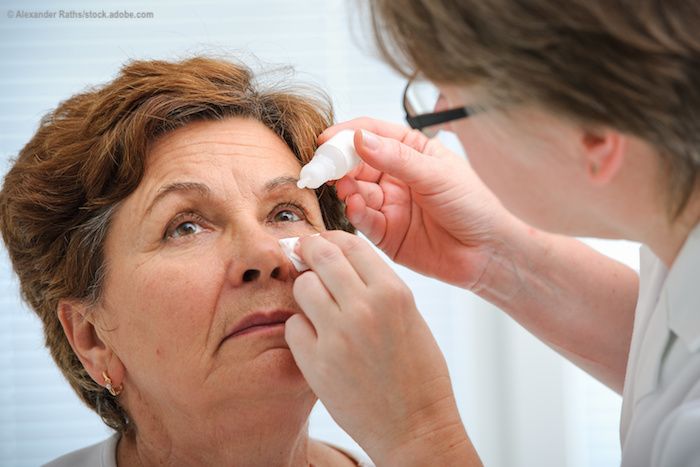Article
Study: Eyenovia delivery technology reduces conjunctival cell toxicity from preserved ophthalmic solutions to level comparable with non-preserved solution
Author(s):
The study, conducted with Tufts Medical Center, represents a breakthrough showing that Microdose Array Print technology can provide similar benefits of non-preserved medications.

Eyenovia Inc. today announced positive results from a research study conducted in collaboration with Pedram Hamrah, MD, interim chairman of ophthalmology at Tufts Medical Center, which evaluated the ocular surface damage from Latanoprost+Benzalkonium Chloride (BAK) treatment administered via Optejet versus Latanoprost+BAK administered via standard eye drops.
Preservatives in topical ophthalmic drugs administered via standard eye drops help ensure sterility of the product and increase shelf-life. However, patients on chronic topical ophthalmic drug treatments often display long term ocular adverse effects due to toxicity from over-exposure to preservatives.
“Long term use of ophthalmic eye drops with preservatives is a significant clinical concern and therapeutic burden,” Robert Weinreb, MD, chairman of ophthalmology at the University of California, San Diego and member of the Eyenovia Scientific Advisory Board, said in a statement. “For patients with chronic conditions such as glaucoma, this is a major concern when treatment with topical medications can last a lifetime.”
Pedram Hamrah, MD, interim chairman of ophthalmology at Tufts Medical Center

According to the study design, conjunctival epithelial cells were exposed to drug by standard drop or Optejet microdose technology. Cell-based assays were then conducted to assess cell viability, cytotoxicity, apoptosis, ROS generation and ATP generation (metabolic activity).
The study found that human conjunctival epithelial cells tolerated Latanoprost+BAK treatment administered via Optejet technology significantly better than Latanoprost+BAK administered via standard drops. Optejet technology had similar results to both latanoprost without BAK and no-treatment controls with respect to all four measures.
“It is well established that BAK preservative in most preserved eye drops causes damage to the ocular surface, including the cornea epithelium, conjunctiva, and neural cells,” Beth Scott, OD, vice president of Regulatory and Medical Affairs at Eyenovia, said in a statement. “The current study successfully proved that due to the much smaller volume of drug and preservatives required with the Optejet device, the level of ocular surface damage due to preservative toxicity would be minimal. This study adds to the body of evidence supporting our breakthrough Optejet technology.”
Last week, Eyenovia announced a $15 million institutional capital investment from Armistice Capital Master Fund Ltd. The company said it expects to use the proceeds from this offering to advance its MydCombi program, including the ramp-up of its manufacturing capabilities, as well as the continued advancement of the MicroLine clinical program and working capital and general corporate purposes.
Newsletter
Don’t miss out—get Ophthalmology Times updates on the latest clinical advancements and expert interviews, straight to your inbox.




